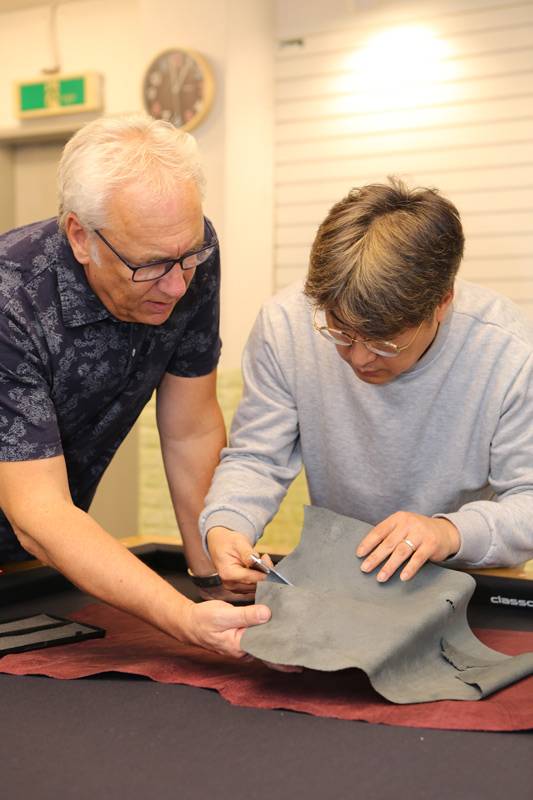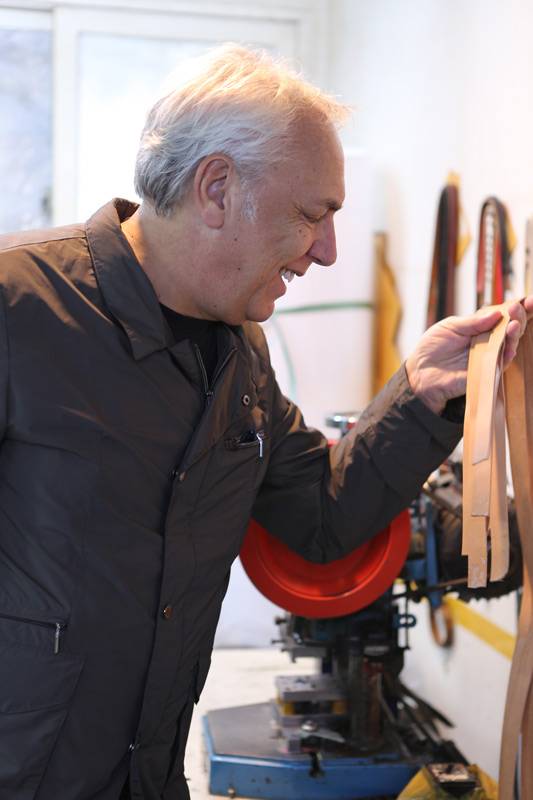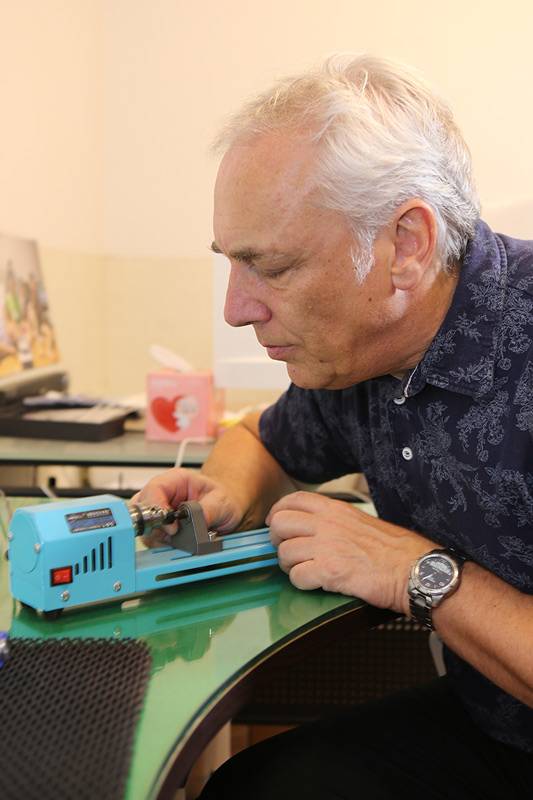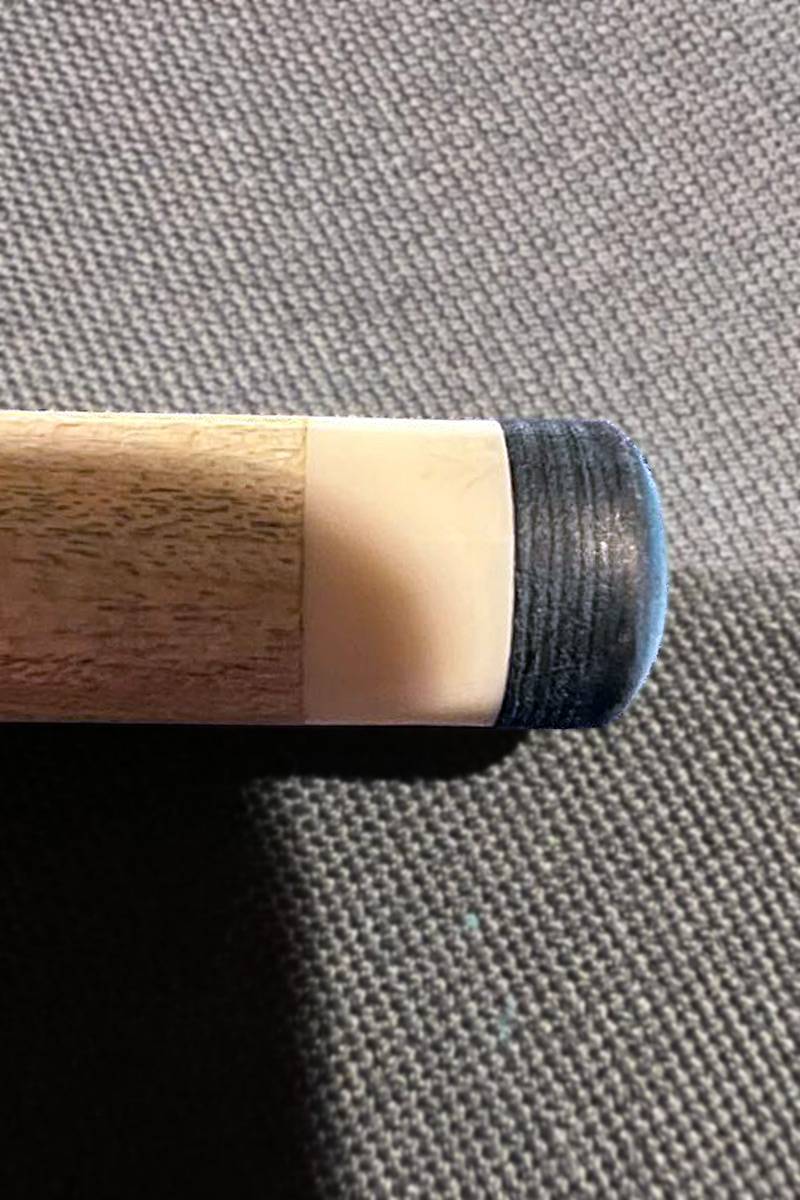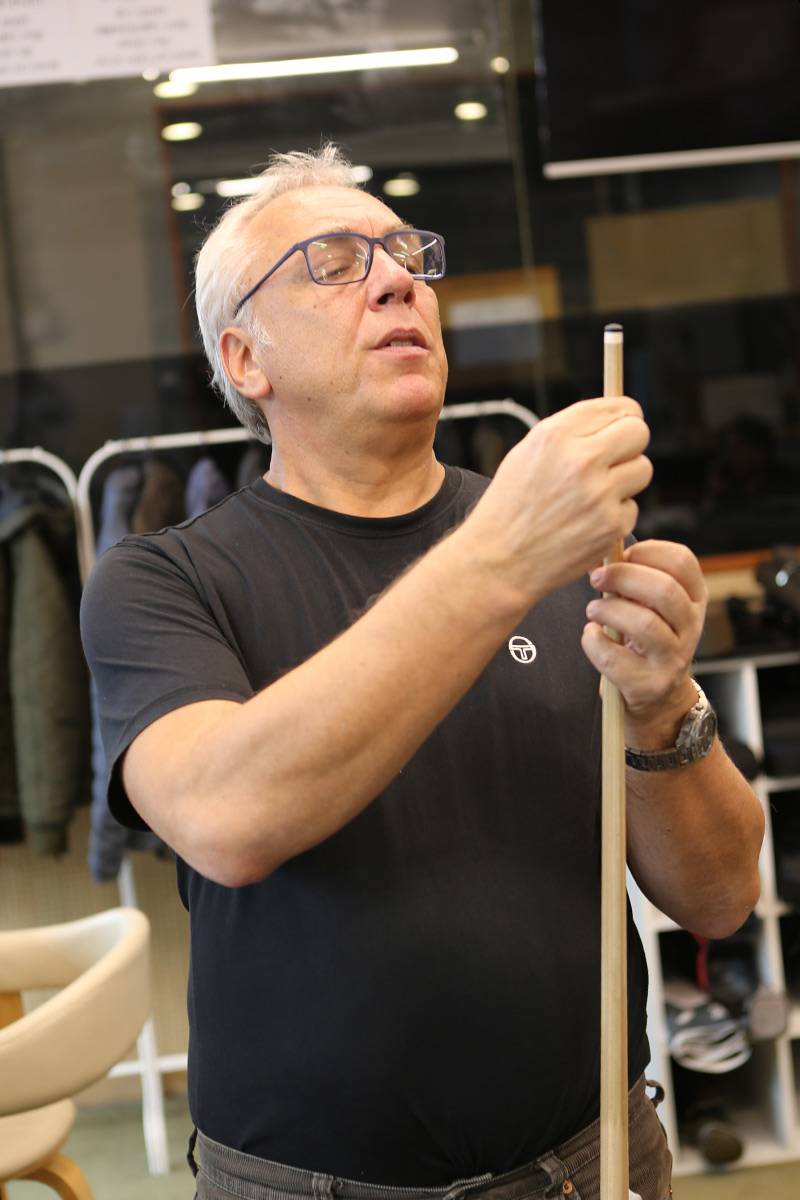WHO IS MARCO ZANETTI
The only part of the cue that touches the ball - the leather tip - is essential for accurate and reliable contact with the cue ball and for the transmission of speed, spin and impact required for the success of all the various shots in every serious billiard player’s “tool box.”
Producing and finding consistently high quality, reliable cue tips is always a challenge for both cue tip craftsmen and for serious players.
The entire process for designing and making a superlative, competitive (and affordable) cue tip took me and my team about two years as we searched for the finest complementary materials and craftsmanship. I believe the final product we now make available - the Marco Zanetti Cue Tip - represents the best cue tip that the market can offer today.

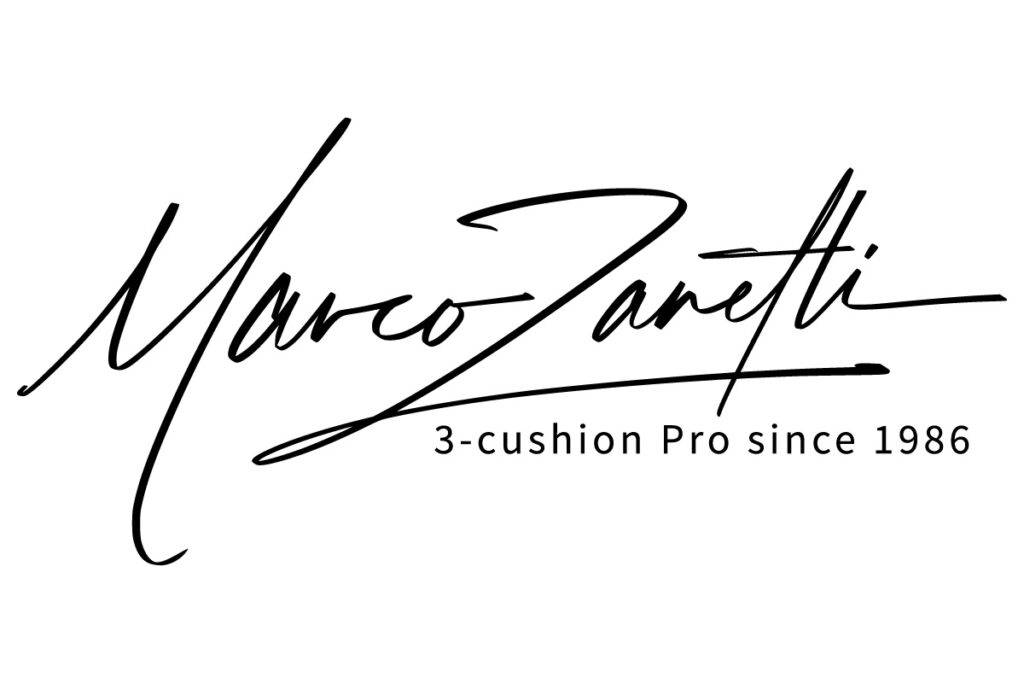
Hi, my name is Marco Zanetti.
I am Italian, born in 1962 in the city of Bolzano, where I currently live.
I have been playing professional billiards in the three-cushion carom discipline for 37 years now.
I learned billiards from my dad, Erwin Zanetti, when I was a child.
I got into different types of carom billiards, like free game, balkline, and one-cushion.
When I was just 15, I won my first Italian title, which was a big deal.
At 19, I won my first European junior title in Belgium.
After that, I won three other European overall titles, in the technical carom disciplines.
In 1986, at 24, I dedicated myself completely to 3-cushion carom.
Debuting at the UMB World Championship in Las Vegas, I secured a notable fourth-place finish.
Thanks to this placement, a few months later, I received an invitation to participate in the new series of professional three-cushion carom tournaments that the German entrepreneur Dr. Werner Bayer was about to create, for the first time in the history of 3-cushion billiards, with the BWA-Association.
This marked the genesis of my professional journey!
In the first years of BWA, the circuit featured only four highly lucrative tournaments annually.
These events were impeccably organized, drawing substantial crowds.
A cherished memory remains my inaugural BWA final in 1987 at Paris’s De Coubertin stadium, captivating 2,000 spectators, although it culminated in Raymond Ceulemans victory.
In 1990, when the BWA-tournaments had already become larger and were “open,” I achieved my first significant victory in a BWA World Cup tournament in Palma de Mallorca, Spain, again in the final against Raymond Ceulemans.
In the ’90s, I was able to add team competitions to my activities, playing for 15 years in the Netherlands (mostly for the city of Hengelo) and then another 12 years in Paris and Strasburg/France with the Agipi team, in addition to a few years in the German Bundesliga.
I won a lot in these teams, nationally and internationally, reaching a total of 12 European titles, the most prestigious competition.
Currently, I’m still playing in team competitions only in France, for the city of Andernos.
In my individual professional career, I won 31 national titles (last 16 years are consecutive), 3 European titles (the most recent secured last year) and 2 world titles in 2002 and 2008.
In the individual World Championships, I have been on the podium a total of 10 times.
Additionally, I garnered three medals at the IOC World Games—bronze in 2009 in Taiwan, gold in 2013 in Colombia, and silver in 2017 in Poland.
I have won 4 World Cup tournaments, with more than 25 podium finishes in total. In my record, there are also 2 Biathlon World titles, a combination of 3-cushion and Italian 5-pins game, won in 1988 and 1996 (the last edition played).
I triumphed in every most famous invitational international Tournament:
Carom Café in New York/USA, Agipi in Strasbourg/France, LG U+ Cup/Seoul/Korea, Crystal Kelly, Nice/France, Lausanne Billiard Masters, Lausanne/Switzerland.
I am the only player worldwide who has achieved this magical poker!
Recently, at 61 years old, I even reached (for a short time) the top spot in the UMB
world ranking, for the first time.
Some say I’m like a good Italian wine, getting better with age! 🙂
Cheers!
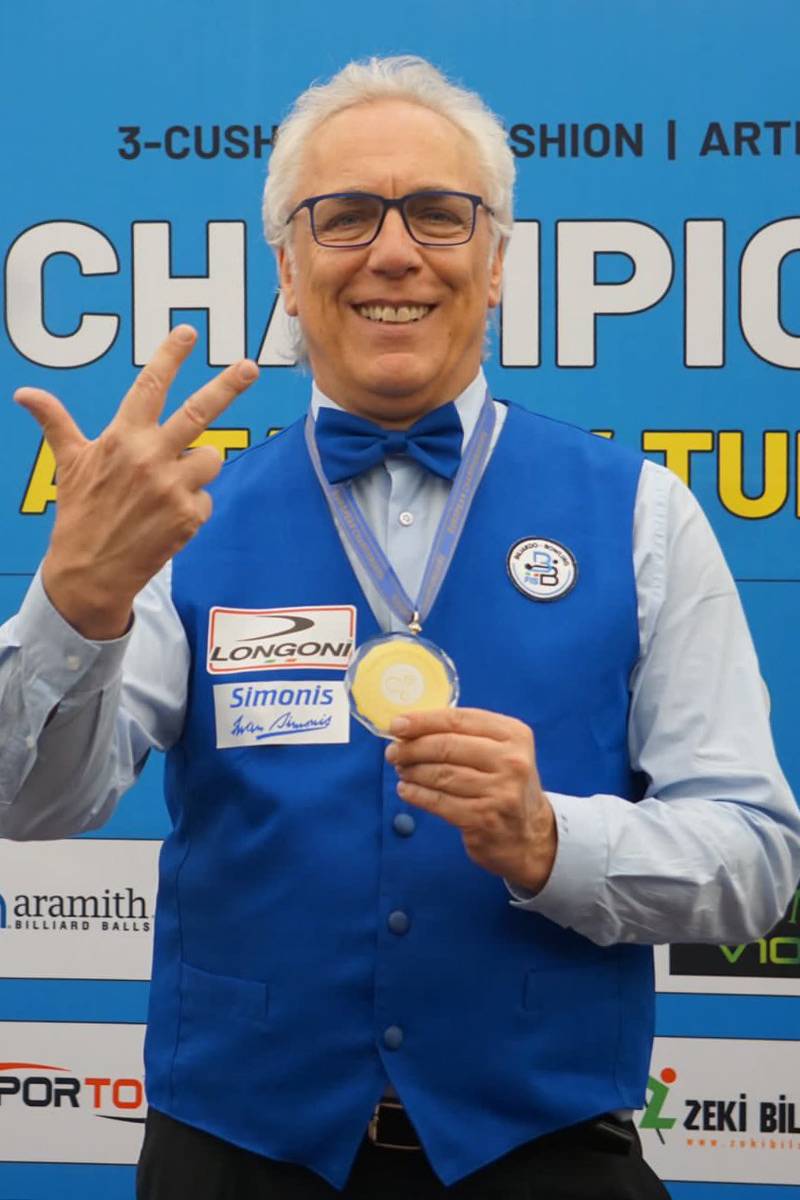
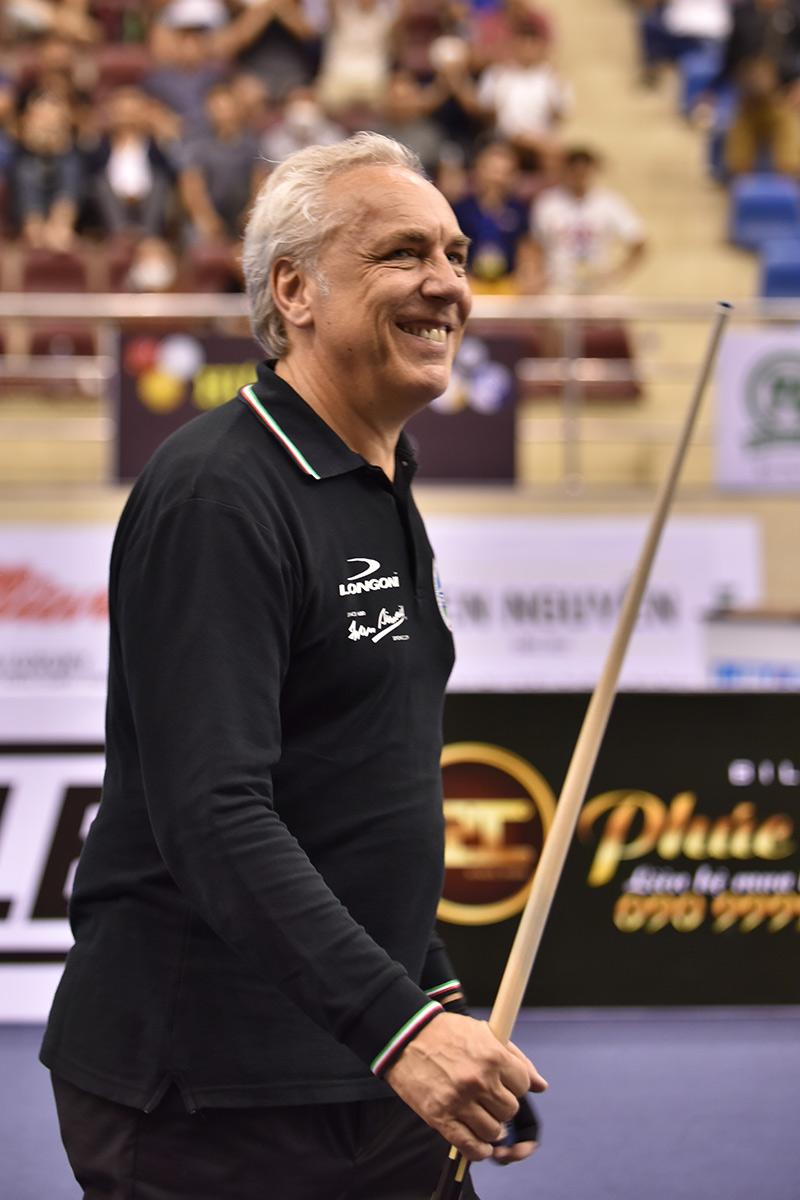

My personal records of averages in official matches are as follows :
– best game, at 40 points distance: 40 in 6 innings, average 6.666 (Italian team championship, Modica 2014), a long time former world record;
– best game, at 50 points: 50 in 9, average 5.555 (German Bundesliga, 2004, a long time former world record);
⁃ best general average in a tournament with 6 games at 40 points: : 2.735 (LG Cup, Seoul/Korea 2017);
⁃ best general average in a tournament with 7 games to 40 points : 2.718 ( UMB World Cup, Sharm el Sheikh/Egypt 2019) – unofficial world record;
⁃ european record of general average in a European Championship: 2.500 (Brandenburg/Germany 2013);
– best high run: 21 (made 3 times).
leather layers
days of production
YEARS OF TESTING
BEST POSITION IN THE UMB WORLD RANKING IN 2023

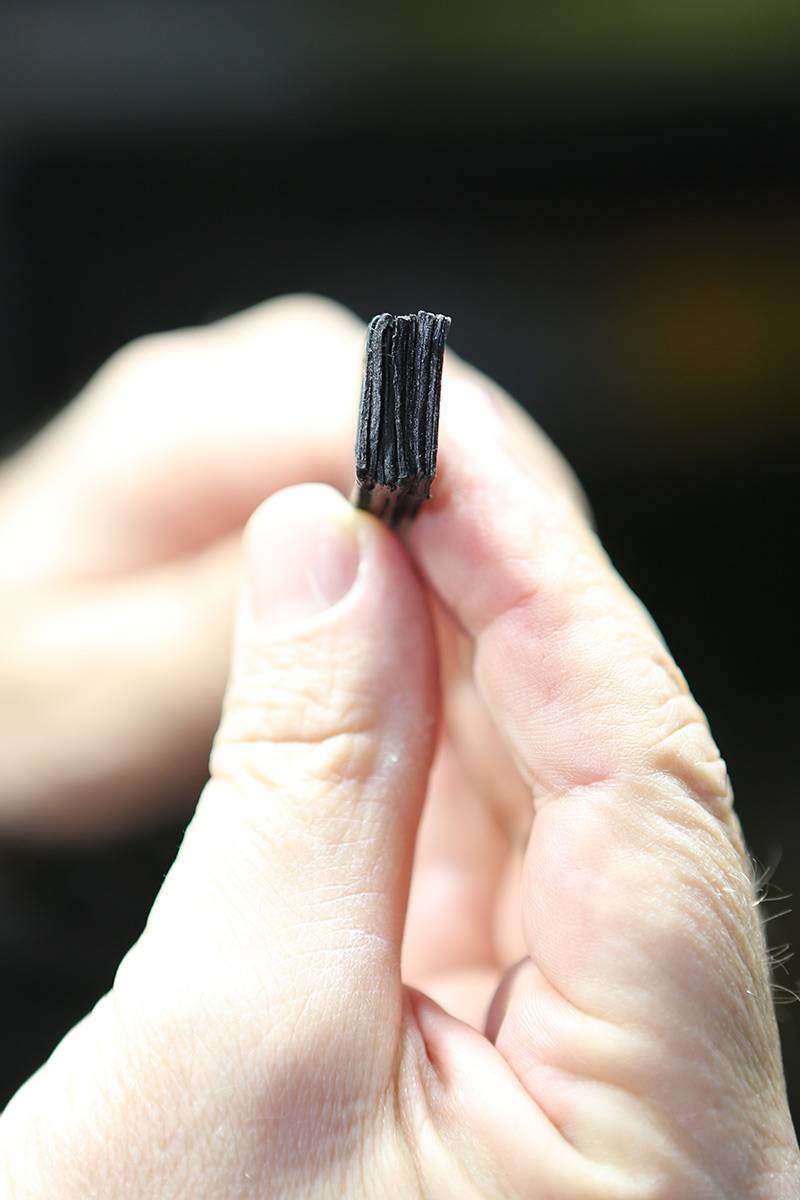

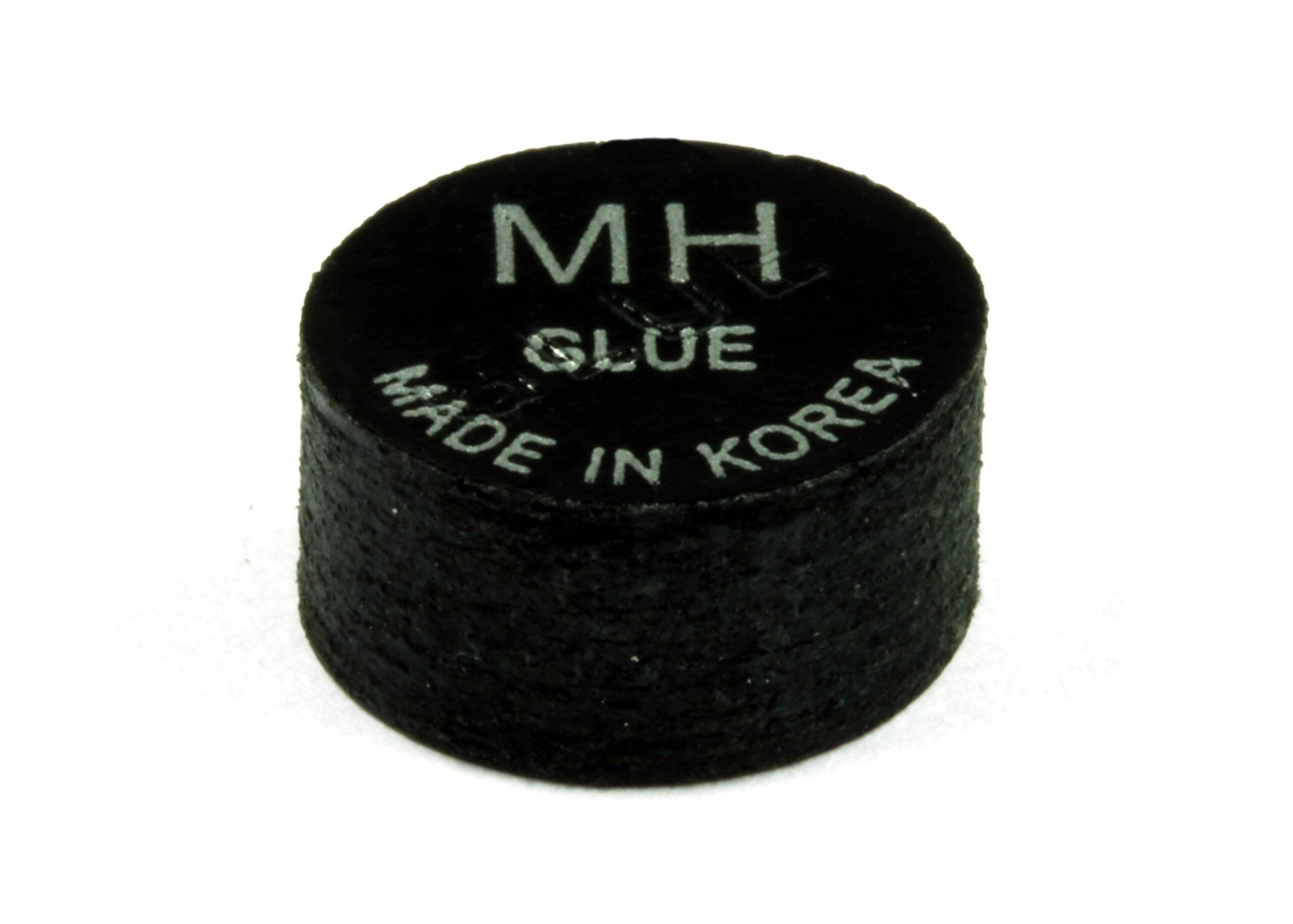
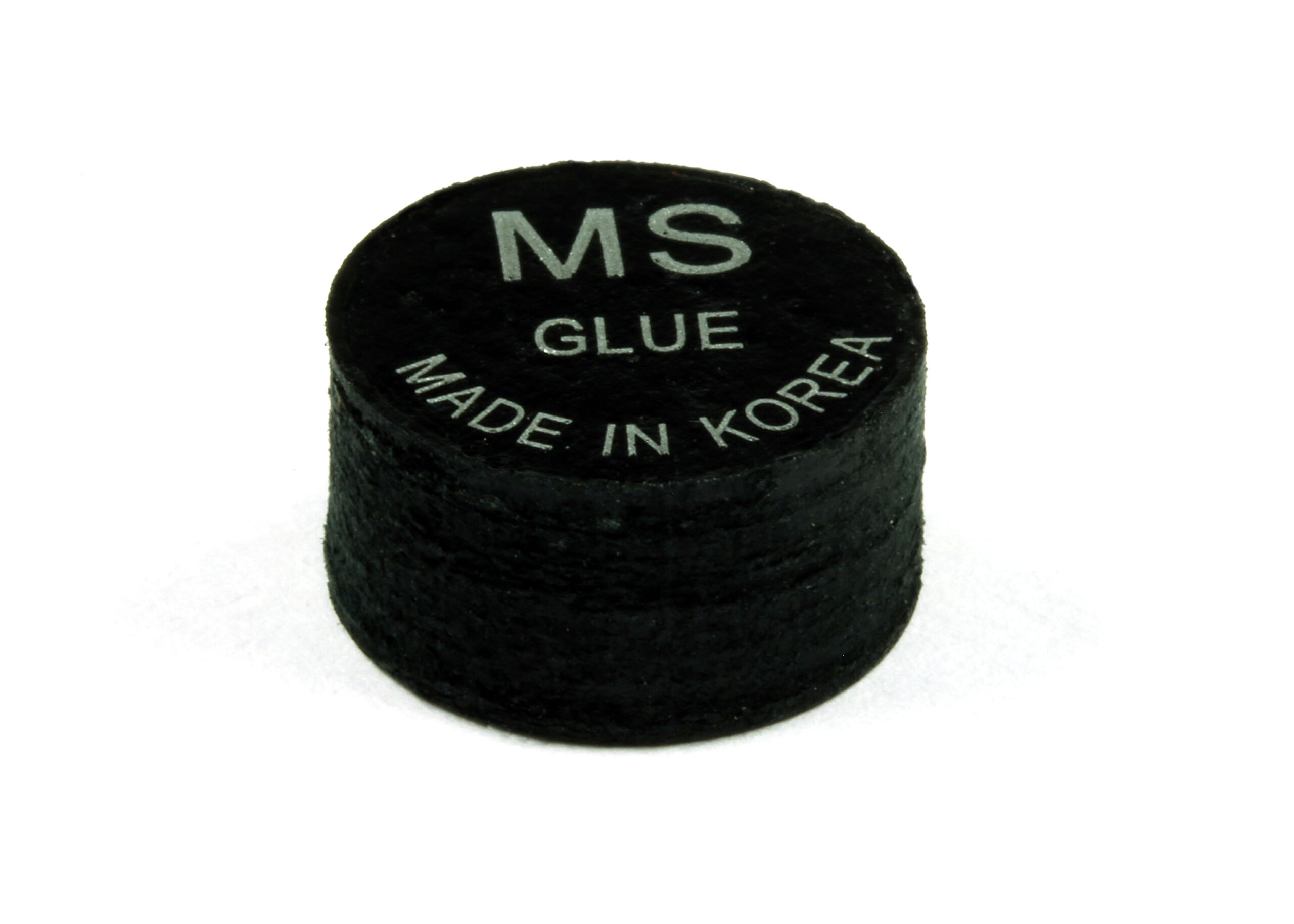
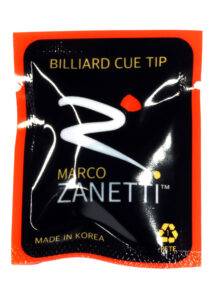
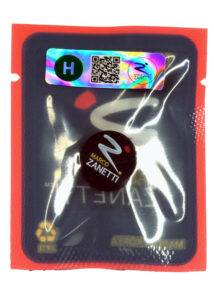
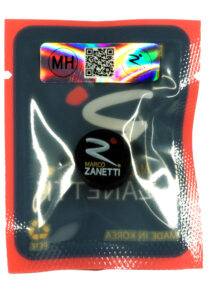
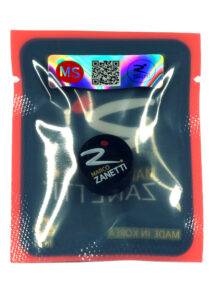
The production of Marco Zanetti’s cue tips takes place through the following steps:
Material Selection: We choose specific parts of the skin from a unique breed of Japanese pig. After a thorough wash, we pick the best parts and discard the rest.
Leather Treatment: We use fewer chemicals and opt for natural components of vegetal origin in the tanning process. The leather is cut into strips and shaved to reduce thickness.
Preparing the Strips: These strips are glued together and the semi-finished product obtained in this way undergoes a series of operations to make it strong and durable. Then it is placed to dry as much as possible. All these stages require a lot of expertise and a considerable amount of time.
Cutting and Marking: Each piece is cut, then the Marco Zanetti logo in colors is engraved using laser printing on one side and the hardness level (MS, MH, H) on the other for gluing.
Hardness Variants and numbers of inlays: there are three hardness options: H (hard), MH (medium-hard), and MS (medium-soft). Our H and MH options have 13 layers, while MS has 12 — a number higher than that of other brands. In addition, this is a clear sign of the distinguished product.
Key Features: The Zanetti cue tip stands out for its exceptional chalk retention, offering a unique grip on the cue ball that enables powerful and precise spinning for an optimal impact transfer.
Players usually adapt to the new cue tip very quickly and experience very positive sensations, which is what truly matters.
Notably, it produces a pleasant sound and its longevity is clearly superior compared to competition products, and its quality remains consistently high over time.
My personal choice: Personally, the MH hardness fits perfectly to me, but it remains a subjective factor for each player—everyone has their own sensitivity.
In any case, it’s about subtle differences, and I can play with any hardness, adapting myself without major issues because the differences are not big.
My suggestion: Every now and then, the cue tip should be lightly roughened by gently passing around a wooden block with sandpaper (without “scratching”!) so that the surface of the cue tip is not as smooth and takes chalk better. Then, from time to time, lightly moisten the edge with a damp finger to impart a bit of moisture to it.
Production duration: the entire cycle takes over 60 days to ensure top quality.

Via Spaino 2, Mariano Comense (Co) – Italy
tel +39 031746542
info@norditalia.it
E-shop for Italy: www.nirshop.it
Norditalia is the commercial arm of Longoni.
For information on dealers in Europe write to: info@norditalia.it


